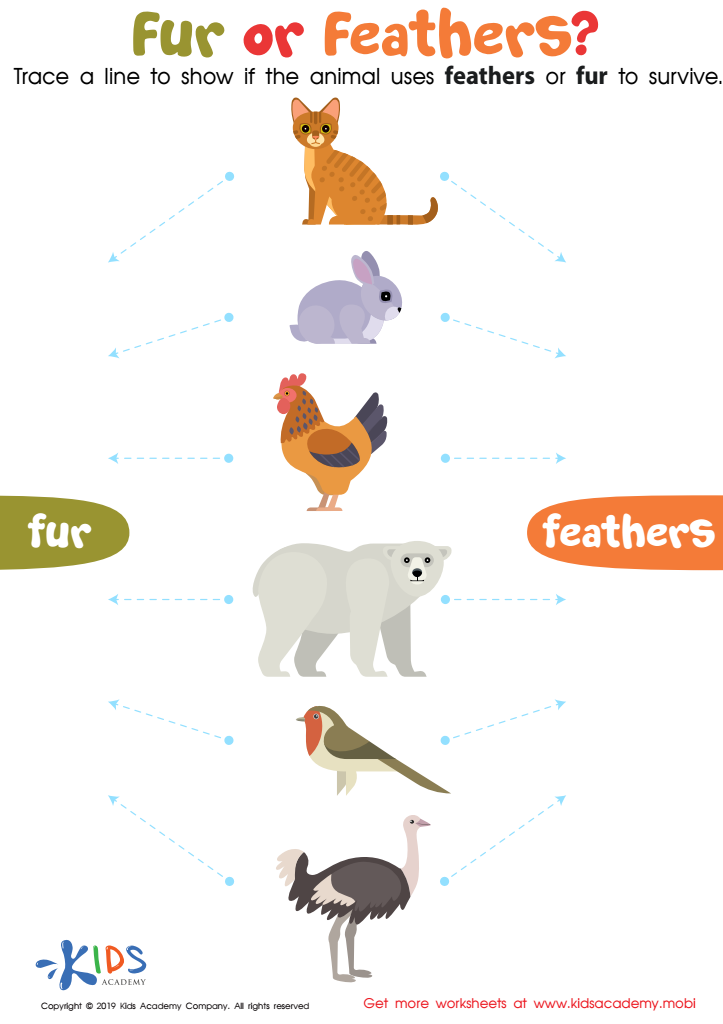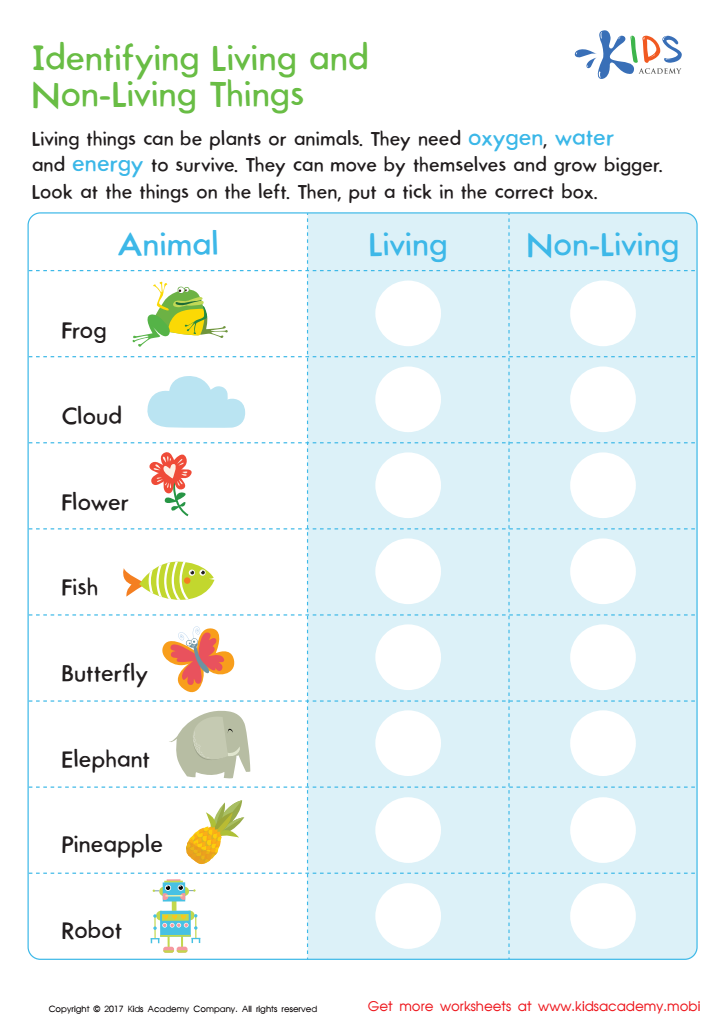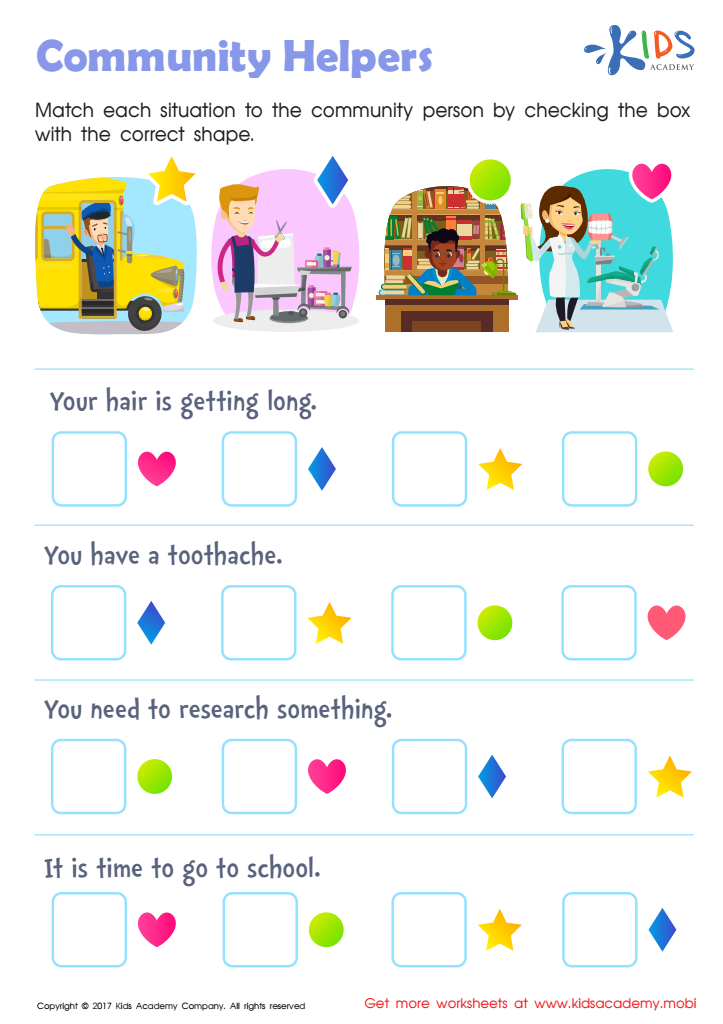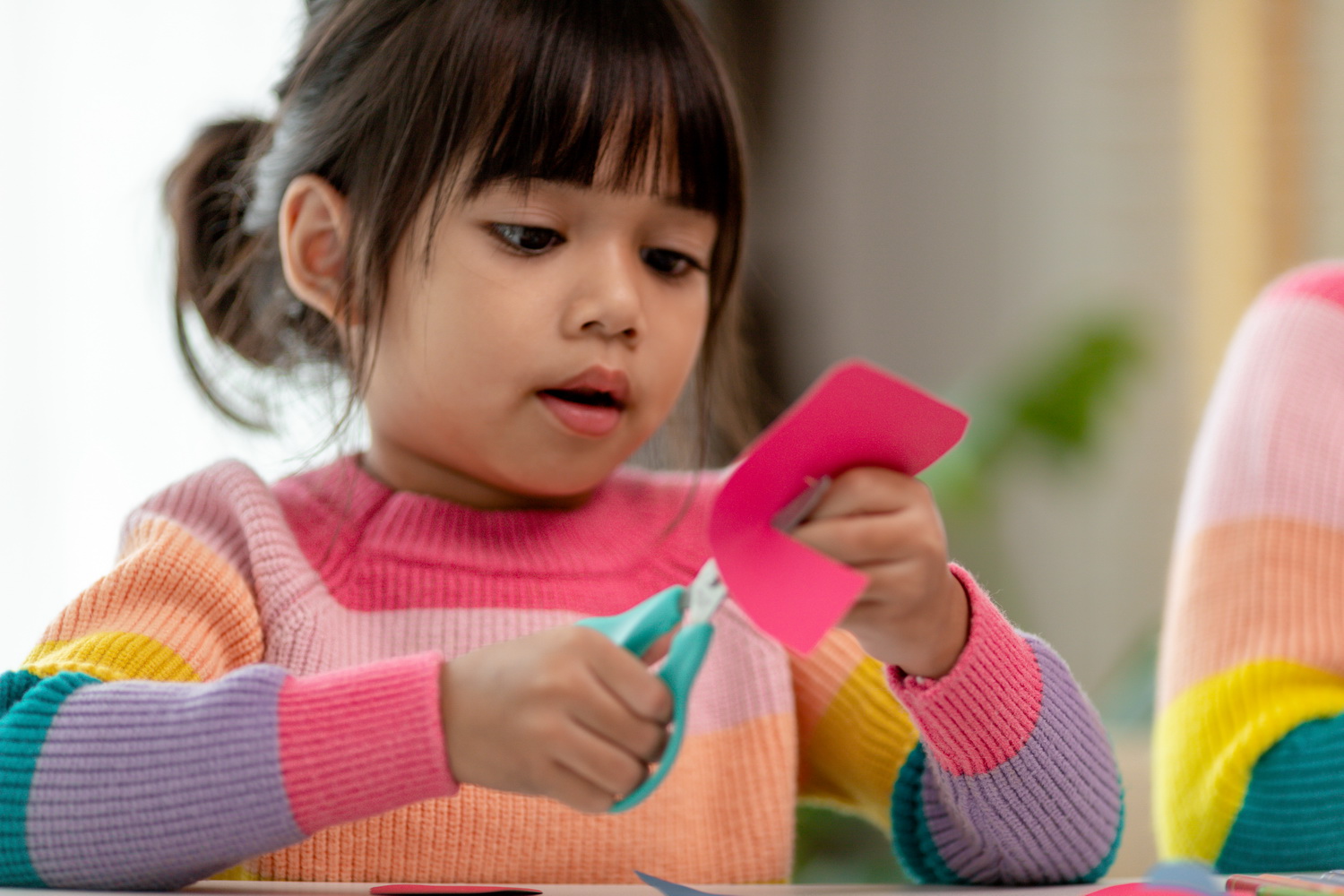Visual recognition skills Worksheets for Ages 6-7
4 filtered results
-
From - To
Enhance your child's visual recognition skills with our engaging and educational worksheets designed specifically for ages 6-7. These carefully crafted worksheets focus on identifying shapes, patterns, and objects, promoting essential cognitive skills crucial for early learning. Ideal for homeschool settings or supplementary practice, each worksheet is interactive and colorful, making learning fun and motivating. With a variety of activities tailored to diverse learning styles, your child will build confidence while improving their ability to recognize and interpret visual information. Explore our collection today and empower your child’s development in a seamless and enjoyable way!


Fur or Feathers? Worksheet


Identifying Living or Non–living Worksheet
Visual recognition skills are crucial for children aged 6-7 as they are foundational for academic success and daily life activities. At this age, children are transitioning from early literacy to more complex reading and comprehension tasks. Strong visual recognition skills enable them to identify letters, words, shapes, and patterns, which are essential for learning how to read and write effectively.
Furthermore, visual recognition aids in mathematics, where children learn to recognize numbers and understand spatial relationships. This skill set can also support problem-solving and critical thinking, as recognizing patterns and details allows children to make connections between concepts.
Beyond academics, visual recognition influences social interactions. Children learn to read non-verbal cues, such as facial expressions, which helps in developing empathy and communication skills. By honing these skills, parents and teachers can foster confidence in children’s abilities to navigate their educational environment and social contexts.
In summary, nurturing visual recognition skills in children aged 6-7 lays the groundwork for their future learning, emotional intelligence, and overall cognitive development, making it essential for parents and educators to prioritize this aspect of child development.
 Assign to My Students
Assign to My Students






.jpg)













